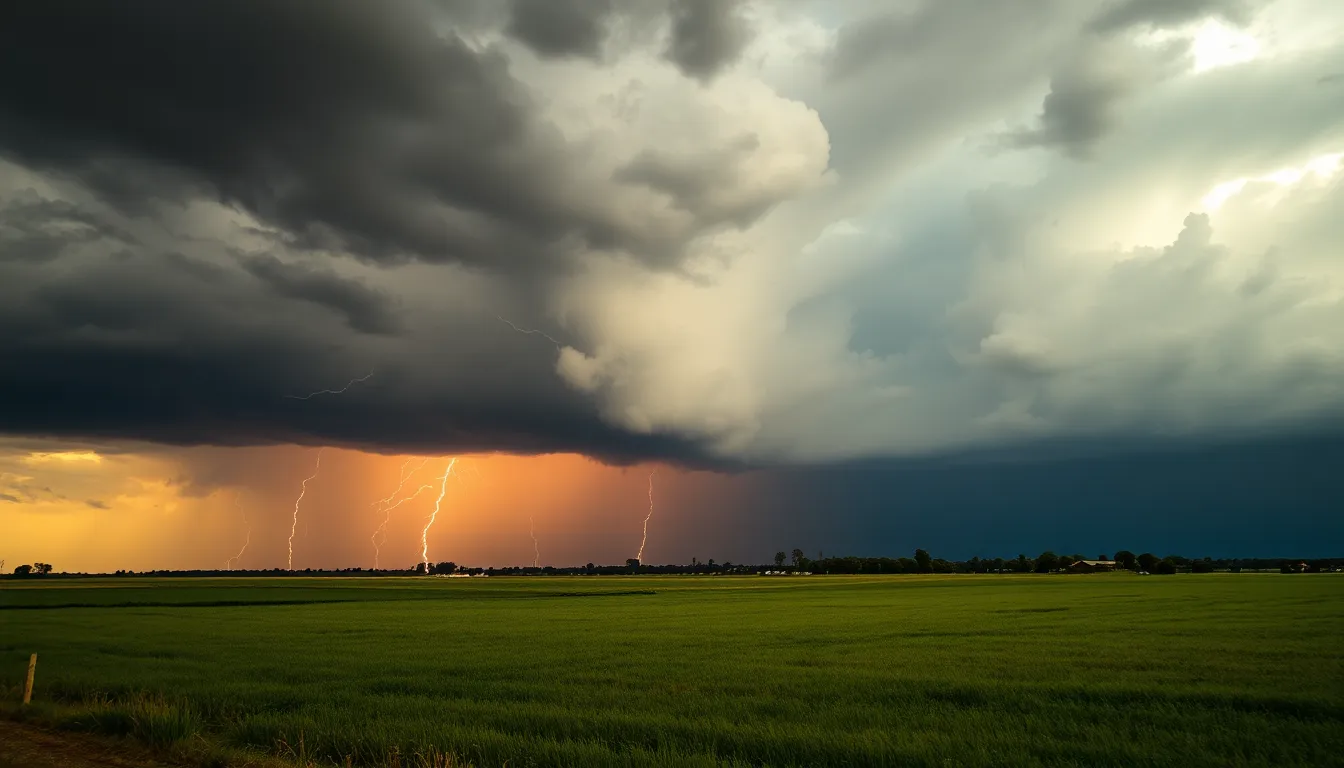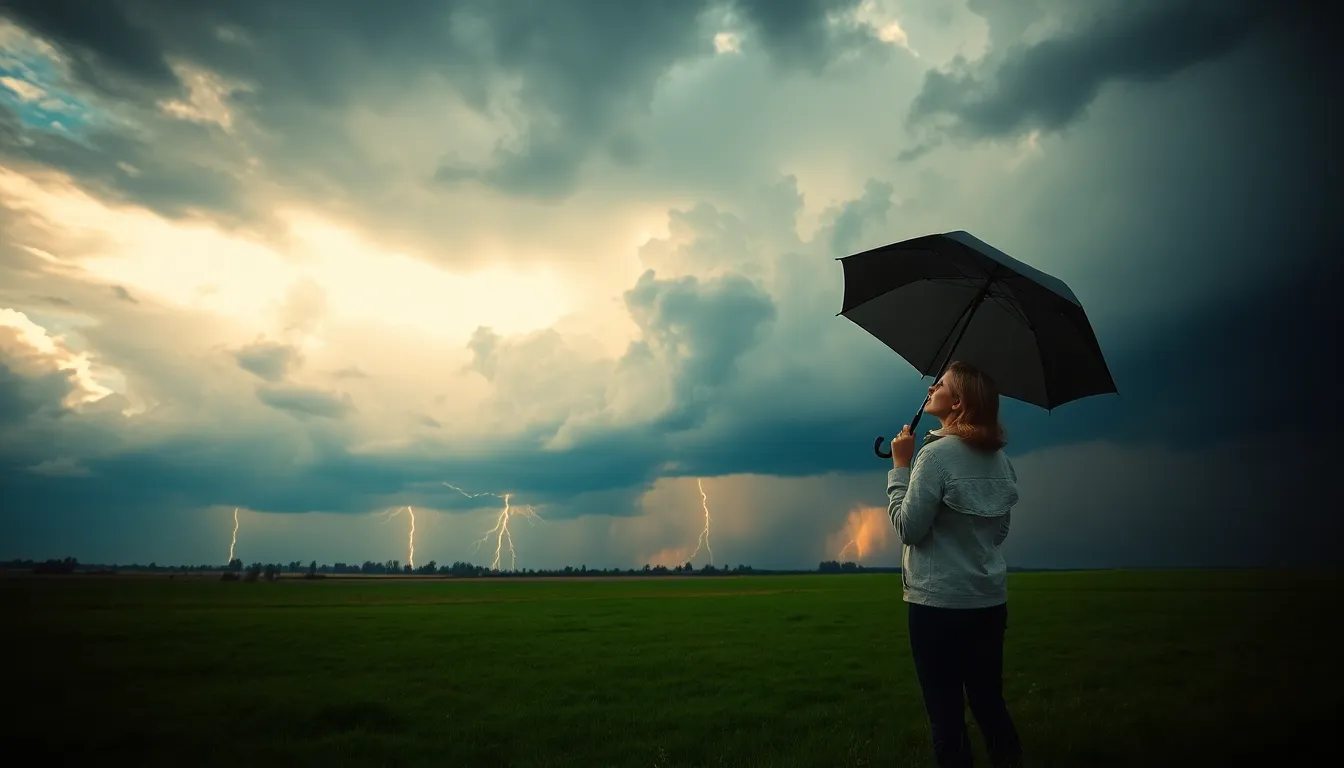When it comes to thunderstorms, most people think of dark skies and torrential downpours. But what if we told you that not all storms are created equal? Enter the isolated thunderstorm, the quirky cousin of the thunderstorm family that likes to keep things interesting. Picture it: one moment, you’re basking in the sun, and the next, a lone cloud decides to throw a party just above your head.
Isolated thunderstorms can pop up unexpectedly, bringing localized rain, lightning, and maybe even a little hail. They’re like that unpredictable friend who shows up to a gathering uninvited, but instead of ruining the mood, they add a dash of excitement. Understanding these unique weather phenomena can help anyone stay prepared and maybe even appreciate the beauty of nature’s surprises. So let’s dive into the world of isolated thunderstorms and discover what makes them so special.
Table of Contents
ToggleUnderstanding Isolated Thunderstorms
Isolated thunderstorms feature unique attributes that set them apart from other storm types. These events can strike suddenly, bringing localized rain, lightning, and sometimes hail.
Definition and Characteristics
Isolated thunderstorms occur independently from larger storm systems. They often develop under specific atmospheric conditions, exhibiting distinct characteristics. Typically, they present as a single cell rather than in clusters. Lightning is common, with thunder accompanying the strong updrafts. Rainfall remains localized, usually limited to a small area. Hail can form, although it is not guaranteed. Due to their nature, these storms can catch individuals off guard, delivering brief but intense weather.
Formation Process
Formation of isolated thunderstorms involves several key factors. First, instability in the atmosphere serves as a crucial ingredient. Warm, moist air rising creates a favorable environment for storm development. As this air ascends, it cools, leading to condensation and cloud formation. Next, wind shear contributes, helping to organize the storm and enhance its strength. Convection plays a critical role, driving warm air upwards, while cooler air descends, creating a cycle. When these conditions align, isolated thunderstorms can quickly develop and dissipate.
Types of Isolated Thunderstorms

Isolated thunderstorms take various forms, primarily categorized as air-mass thunderstorms and frontal thunderstorms. Understanding these types enhances awareness of their characteristics and behaviors.
Air-Mass Thunderstorms
Air-mass thunderstorms typically form in warm, humid air masses. They develop during afternoons when surface heating creates strong updrafts. These storms generally last under an hour, often featuring brief heavy rain and lightning. While they predominantly occur in summer months, they can arise in any warm season. Characteristics include low to moderate wind shear, which stabilizes the storm’s structure. Given their formation conditions, air-mass thunderstorms frequently appear in a cluster, leading to localized weather phenomena.
Frontal Thunderstorms
Frontal thunderstorms originate when warm, moist air collides with cooler air masses, creating a frontal boundary. This type of storm often exhibits more organization and strength compared to air-mass thunderstorms. The interaction between the air masses triggers powerful updrafts, leading to prolonged rainfall and potential severe weather events. Wind shear plays a pivotal role in enhancing their development, contributing to strong gusts, hail, and lightning. These thunderstorms form at any time of year but are prevalent during transitional seasons like spring and fall. Characteristics include heavier precipitation and potential for longer duration, impacting broader areas than their air-mass counterparts.
Impacts of Isolated Thunderstorms
Isolated thunderstorms can lead to significant weather effects and safety concerns. Understanding these impacts helps individuals prepare for sudden changes in weather conditions.
Weather Effects
Localized rainfall commonly accompanies isolated thunderstorms. Some regions may experience heavy downpours, leading to temporary flooding. Hail often falls during these events, potentially damaging crops and vehicles. Lightning poses a major risk as well, striking unpredictably and causing fires or power outages. Extreme wind gusts may occur, reaching speeds of 50 mph or more, further contributing to property damage. The unpredictable nature of these storms highlights the need for vigilance in affected areas.
Safety Concerns
Safety becomes a priority when isolated thunderstorms develop. Individuals should seek shelter indoors during severe weather, avoiding open spaces and tall objects. Flash flooding can quickly escalate, so awareness of local flooding risks is crucial. Travelers must remain cautious on roads during such storms, as visibility may diminish rapidly. Staying informed through weather alerts helps individuals make timely decisions regarding safety. Preparing emergency kits with essential supplies ensures readiness for unexpected weather events.
Comparison with Other Thunderstorm Types
Isolated thunderstorms differ from other storm types in their formation and intensity.
Multicell and Supercell Thunderstorms
Multicell thunderstorms comprise several individual storm cells that form in clusters. Each cell can produce severe weather, including heavy rain and hail. In contrast, supercell thunderstorms represent a more organized structure with a rotating updraft. These storms are capable of causing significant damage and severe conditions like tornadoes. While isolated thunderstorms occur independently, multicell and supercell formations rely on larger atmospheric conditions to sustain them.
Severe Weather Ratings
Severe weather ratings help categorize the impact of thunderstorms. Isolated thunderstorms may not receive a severe weather tag because they often remain localized and short-lived. In contrast, multicell and supercell storms can attain higher ratings due to their potential for extensive damage. The Enhanced Fujita Scale and the Storm Prediction Center classifications provide a framework for assessing storm severity. By understanding these ratings, individuals can better gauge the risks associated with different types of thunderstorms.
Isolated thunderstorms serve as a fascinating reminder of nature’s unpredictability. Their sudden formation and unique characteristics make them distinct from larger storm systems. Understanding these storms equips individuals with the knowledge to prepare for their brief yet intense impacts.
Awareness of the safety risks associated with isolated thunderstorms is crucial. Lightning, hail, and strong winds can pose significant threats, emphasizing the importance of seeking shelter and staying informed. By recognizing the differences between isolated thunderstorms and other storm types, people can better appreciate the complexity of weather phenomena.
Ultimately, embracing the beauty and unpredictability of isolated thunderstorms encourages respect for nature’s power and the need for preparedness in the face of sudden weather changes.





